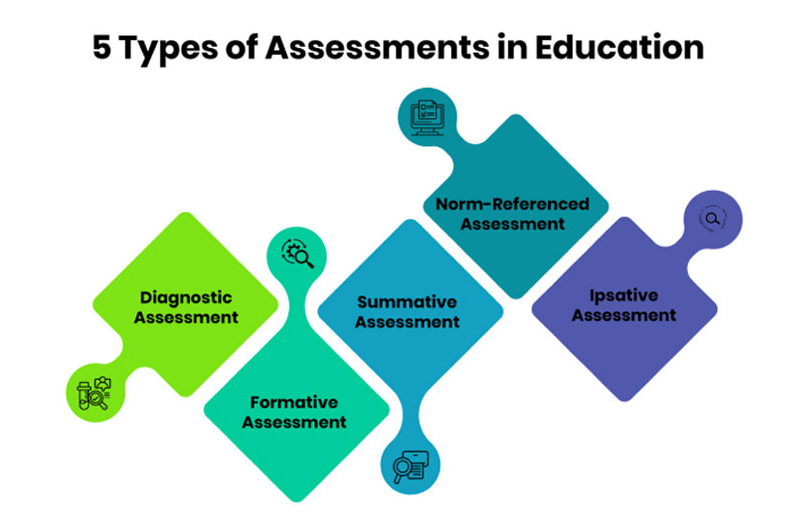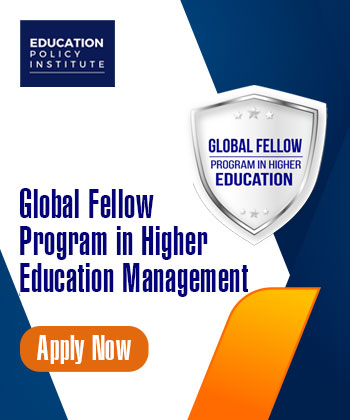Assessments are vital in education, helping teachers understand students' needs, track progress, and assess skills. While standardized tests were once prevalent, modern education values diverse assessment methods tailored to students. In today's classrooms, assessments include tests, essays, speeches, and projects, offering insights into student learning. Teachers use assessment data to adjust teaching, meet individual needs, and inform curriculum decisions.
This article explores various assessment types, from standardized tests to personalized evaluations, empowering educators to enhance student learning and success.
Importance of Implementing Educational Assessments
Assessments are the cornerstone of education, offering invaluable insights into students' knowledge, skills, and progress. They serve multiple purposes that are integral to both teaching and learning.
-
Student Learning Through Feedback
Assessments facilitate student learning by providing feedback on their comprehension of course materials. They serve as checkpoints, allowing students to gauge their understanding and identify areas that require further attention. By knowing where they stand, students can adjust their study strategies and seek additional support as needed. -
Acts as a Motivator
Assessments act as motivators for students. When students receive feedback on their performance, they are encouraged to strive for improvement. Recognizing their strengths and weaknesses empowers students to set goals and work towards achieving them. This intrinsic motivation fosters a culture of continuous learning and growth. -
Evaluates Effectiveness of Teaching
In addition to benefiting students, assessments also inform teaching practices. Teachers use assessment data to evaluate the effectiveness of their instructional methods and make necessary adjustments. By analyzing student performance, teachers can identify trends and tailor their teaching strategies to better meet the needs of their students. This iterative process enhances the quality of instruction and promotes student success. -
Better Decision-making
The purpose of assessments extends beyond merely evaluating student achievement. They also serve as tools for measuring progress and informing instructional decisions. Whether assessing learning outcomes through standardized tests or promoting active engagement through problem-solving activities, assessments play a vital role in shaping the educational experience.
In essence, assessments are not just about assigning grades; they are about guiding and supporting student learning. By recognizing the importance of assessments and leveraging them effectively, educators can create dynamic learning environments where every student has the opportunity to thrive.
5 Types of Assessments in Education
In the realm of education, assessments play a crucial role in shaping instructional strategies, evaluating student progress, and informing decision-making processes. There are various types of assessments, each serving distinct purposes and offering valuable insights into student learning. Here, we delve into the five major types of assessments and their significance in educational practice.

-
1. Diagnostic Assessment:
At the onset of a learning journey, diagnostic assessments serve as a foundational tool to gauge students' prior knowledge, skills, and learning gaps. Administered at the beginning of a course, unit, or lesson, these assessments help educators tailor instruction to meet individual student needs effectively.Diagnostic assessments can take various forms, including pretests, concept maps, questionnaires, or interviews. By providing a baseline for future assessment, facilitating efficient learning processes, and enabling targeted instruction, diagnostic assessments pave the way for personalized learning experiences.
Other benefits of diagnostic assessment include:
- Establishing a baseline for future assessment.
- Enhancing the efficiency of the learning process.
- Facilitating better individualized instruction.
- Enabling teachers to align learning outcomes with specific goals.
-
2. Formative Assessment:
Embedded within ongoing instruction, formative assessments offer real-time insights into student understanding and progress. These assessments occur dynamically during teaching, allowing educators to adjust their instructional strategies based on immediate feedback.Examples of formative assessments include class discussions, quizzes, and periodic student feedback.
By fostering student engagement, facilitating timely intervention, and promoting individualized instruction, formative assessments contribute significantly to enhancing the learning experience.
Some advantages of formative assessment include:
- Prompt feedback on teaching methods.
- Improved customization of instruction.
- Targeted feedback provision.
- Enhanced student engagement.
- Sense of accomplishment for all students, including those less successful in formal testing settings.
- Insight into students' thought processes.
-
3. Summative Assessment:
Unlike formative assessments, which focus on ongoing progress, summative assessments occur at the culmination of a unit, course, or academic period to evaluate students' overall knowledge and understanding.Examples of summative assessments include final examinations, presentations, and research projects.
While providing a comprehensive evaluation of student performance, summative assessments also serve accountability purposes and inform future instructional planning. However, it's essential to mitigate undue stress on students and ensure that these assessments align with best practices to capture a holistic picture of learning outcomes.
Additionally, summative assessments offer:
- Insight into students' acquired knowledge.
- Indication of students' readiness for upcoming learning phases (such as lessons, units, or school years).
- Opportunity for students to apply their learning.
- Identification of gaps in both teaching and learning.
-
4. Norm-Referenced Assessment:
Norm-referenced assessments compare individual student performance to a larger group, providing insights into students' relative achievement levels.These assessments, often reported in percentiles, help educators evaluate student performance in relation to specific standards or populations.
Examples include standardized tests and college entrance examinations.
While norm-referenced assessments offer valuable comparative data, they may not provide detailed insights into individual strengths and weaknesses.
Educators can leverage these assessments to identify relative performance trends and make informed instructional decisions.
Norm-referenced assessments also:
- Facilitate identification of students who may need additional support or enrichment based on their relative performance compared to peers.
- Provide a standardized measure for evaluating student achievement across different schools or regions.
- Assist in benchmarking student performance against national or international standards.
- Offer insights into trends and patterns in student performance over time, aiding in educational research and policy-making.
-
5. Ipsative Assessment:
Ipsative assessments focus on measuring students' progress against their own previous performance, prioritizing individual growth over comparisons with peers. By tracking students' development over time and encouraging self-reflection and goal-setting, ipsative assessments foster intrinsic motivation and continuous improvement.Examples of ipsative assessments include comparing pre-test results with final exams and implementing a two-stage testing process.
Emphasizing learning over meeting external standards, ipsative assessments empower students to monitor their own achievements and strive for self-improvement.
Ipsative assessments also offer:
- Encourages a growth mindset by prioritizing personal improvement.
- Customizes learning experiences based on individual needs and goals.
- Enhances metacognitive skills through active monitoring and evaluation.
- Develops resilience and perseverance in achieving personal learning targets.
Holistically, each type of assessment in education serves a distinct yet complementary role in supporting student learning and informing instructional practices. From diagnosing learning needs to providing real-time feedback, evaluating overall understanding, and fostering individual growth, assessments form an integral part of the educational landscape. By leveraging a diverse range of assessment strategies, educators can create inclusive, adaptive learning environments that cater to the diverse needs of all learners.
Conclusion
Education without assessments is like a music without rhythm which doesn’t serve its sole purpose. To understand the extent to which one have gained benefits from the teaching-learning process, it is essential to hold on to proper assessment mechanisms.
Here, diagnostic assessments tailor instruction for personalized learning, while formative assessments enhance engagement and provide timely feedback. Summative assessments evaluate overall performance and inform future planning. Norm-referenced assessments compare student achievement, and ipsative assessments prioritize individual growth.
Collectively, these assessment types contribute to creating inclusive, adaptive learning environments where every student has the opportunity to thrive. By leveraging a diverse range of assessment strategies, educators can enhance student learning and success, ultimately empowering students to reach their full potential.





